Nucleo-F103RB
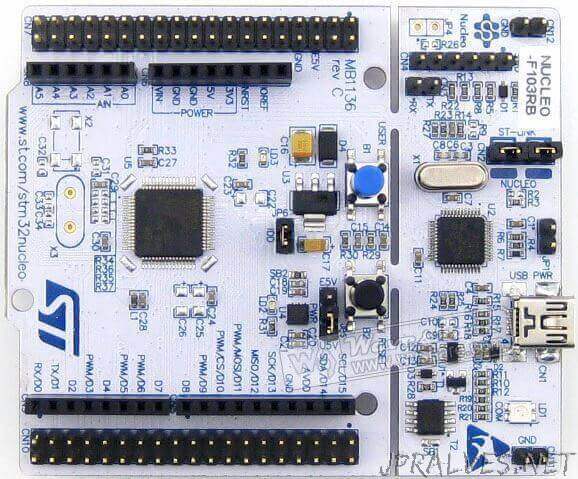
The STM32 Nucleo board provides an affordable and flexible way for users to try out new ideas and build prototypes with any STM32 microcontroller line, choosing from the various combinations of performance, power consumption and features. The Arduino™ connectivity support and ST Morpho headers make it easy to expand the functionality of the STM32 Nucleo open development platform with a wide choice of specialized shields. The STM32 Nucleo board does not require any separate probe as it integrates the ST-LINK/V2-1 debugger and programmer. The STM32 Nucleo board comes with the STM32 comprehensive software HAL library together with various packaged software examples, as well as direct access to mbed online resources.
Specifications
- STM32 microcontroller with LQFP64 package
- Two types of extension resources
- Arduino Uno Revision 3 connectivity
- STMicroelectronics Morpho extension pin headers for full access to all STM32 I/Os
- mbed-enabled (http://mbed.org)
- On-board ST-LINK/V2-1 debugger/programmer with SWD connector
- selection-mode switch to use the kit as a standalone ST-LINK/V2-1
- Flexible board power supply
- USB VBUS or external source(3.3 V, 5 V, 7 - 12 V)
- Power management access point
- Three LEDs
- USB communication (LD1), user LED (LD2), power LED (LD3)
- Two push buttons: USER and RESET
- USB re-enumeration capability: three different interfaces supported on USB
- Virtual Com port
- Mass storage
- Debug port
- Supported by wide choice of Integrated Development Environments (IDEs) including IAR™, Keil®, GCC-based IDEs
PinOut
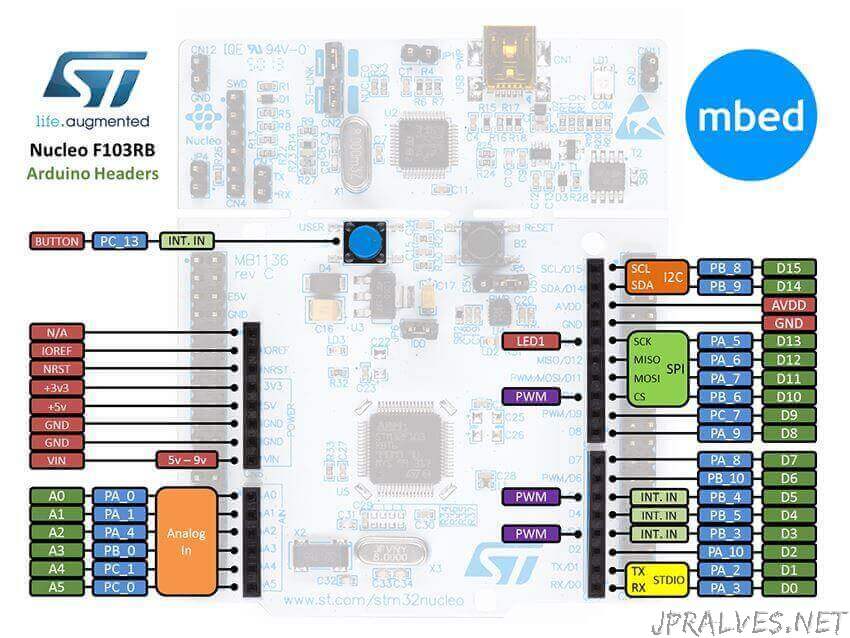
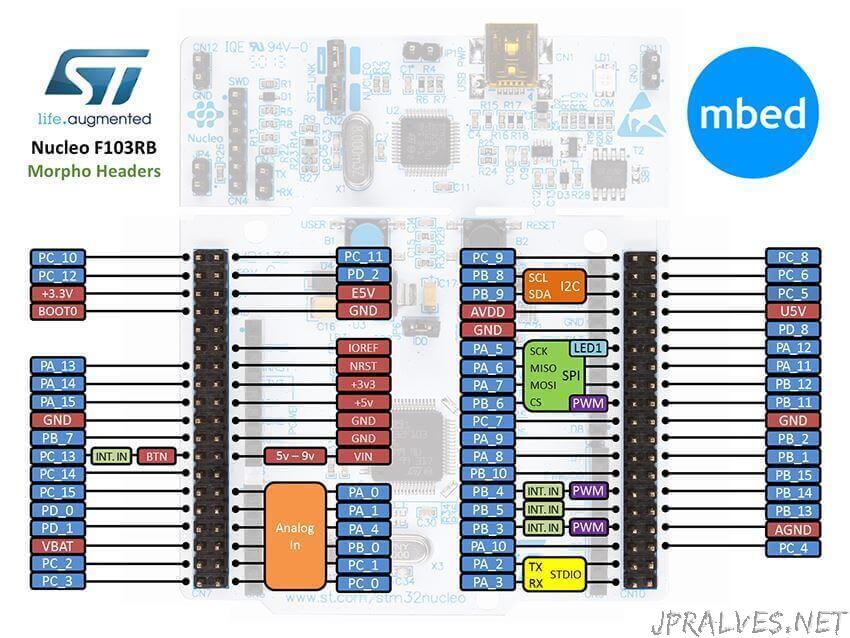
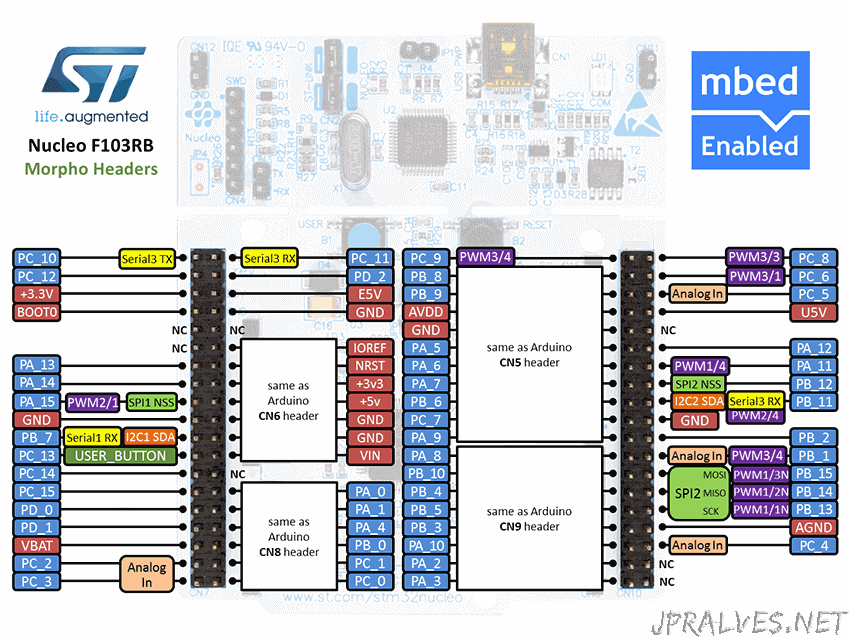
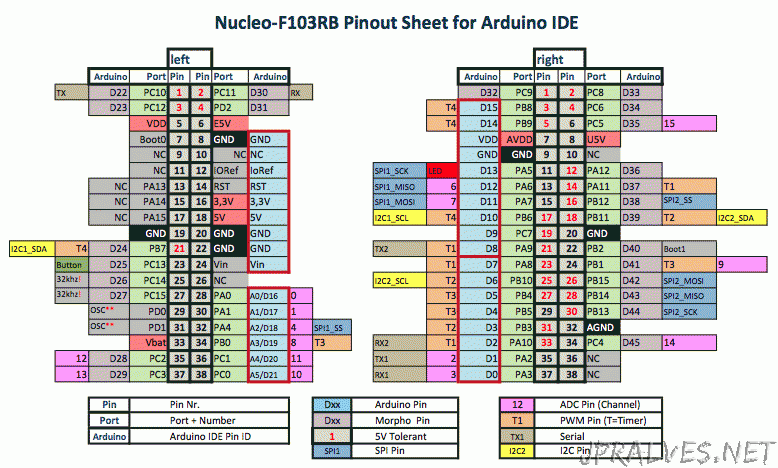
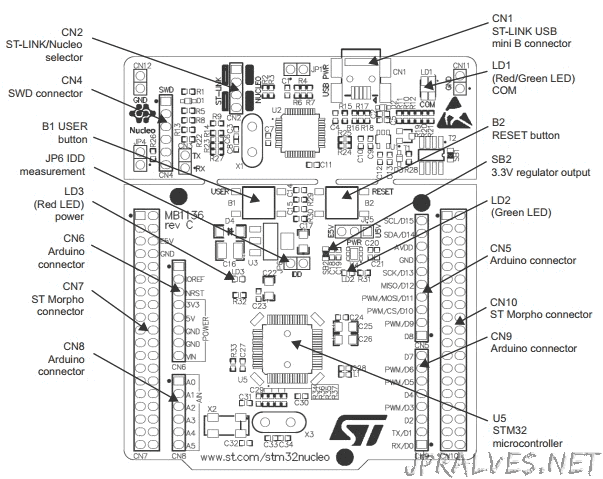
Dimensions
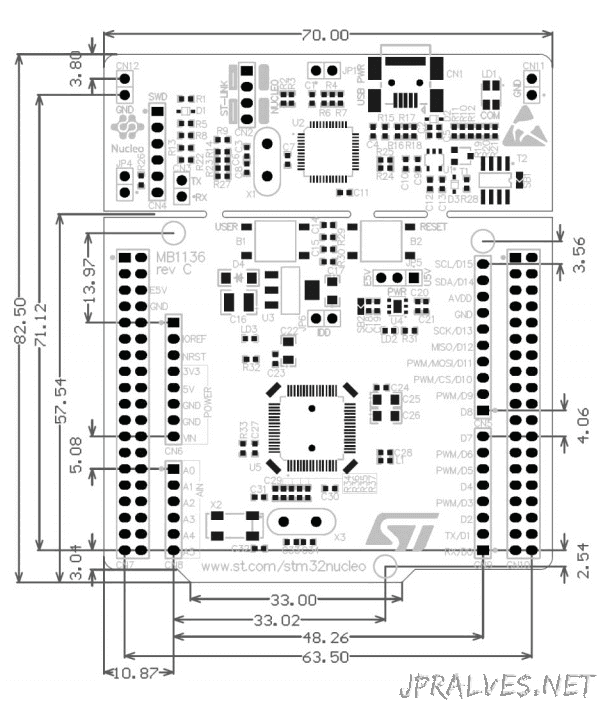
Nucleo-F411RE
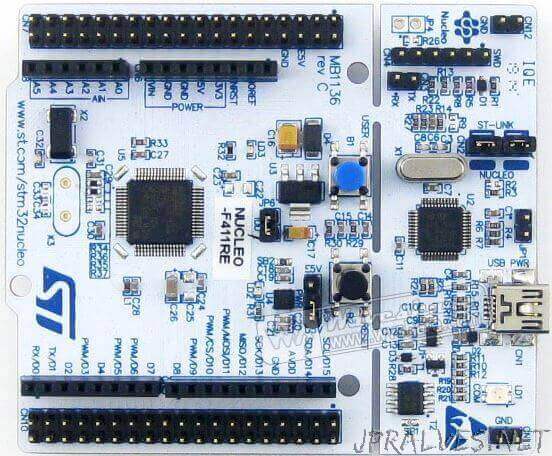
The STM32 Nucleo board provides an affordable and flexible way for users to try out new ideas and build prototypes with any STM32 microcontroller line, choosing from the various combinations of performance, power consumption and features. The Arduino™ connectivity support and ST Morpho headers make it easy to expand the functionality of the STM32 Nucleo open development platform with a wide choice of specialized shields. The STM32 Nucleo board does not require any separate probe as it integrates the ST-LINK/V2-1 debugger and programmer. The STM32 Nucleo board comes with the STM32 comprehensive software HAL library together with various packaged software examples, as well as direct access to mbed online resources.
Specifications
- STM32 microcontroller with LQFP64 package
- Two types of extension resources
- Arduino Uno Revision 3 connectivity
- STMicroelectronics Morpho extension pin headers for full access to all STM32 I/Os
- mbed-enabled (http://mbed.org)
- On-board ST-LINK/V2-1 debugger/programmer with SWD connector
- selection-mode switch to use the kit as a standalone ST-LINK/V2-1
- Flexible board power supply
- USB VBUS or external source(3.3 V, 5 V, 7 - 12 V)
- Power management access point
- Three LEDs
- USB communication (LD1), user LED (LD2), power LED (LD3)
- Two push buttons: USER and RESET
- USB re-enumeration capability: three different interfaces supported on USB
- Virtual Com port
- Mass storage
- Debug port
- Supported by wide choice of Integrated Development Environments (IDEs) including IAR™, Keil®, GCC-based IDEs
PinOut

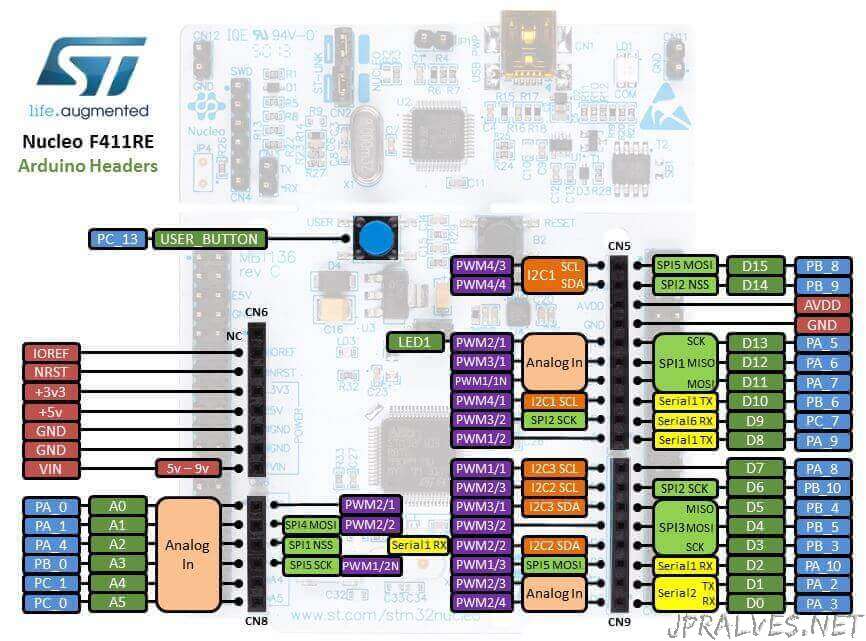
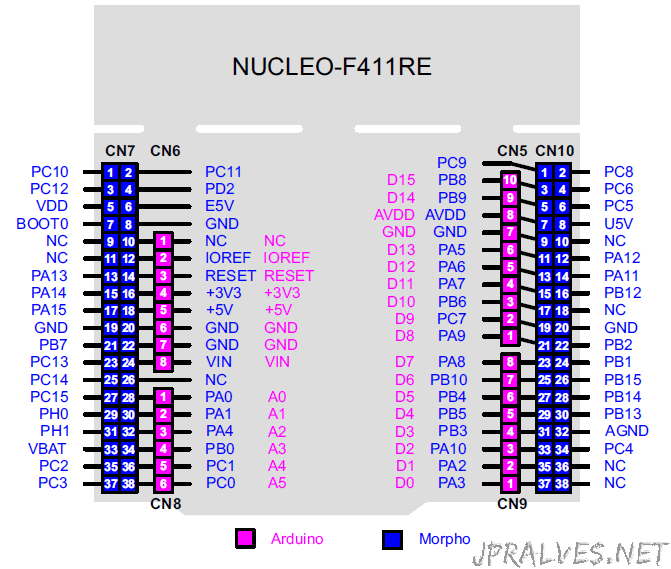
Links
NUCLEO-F303K8
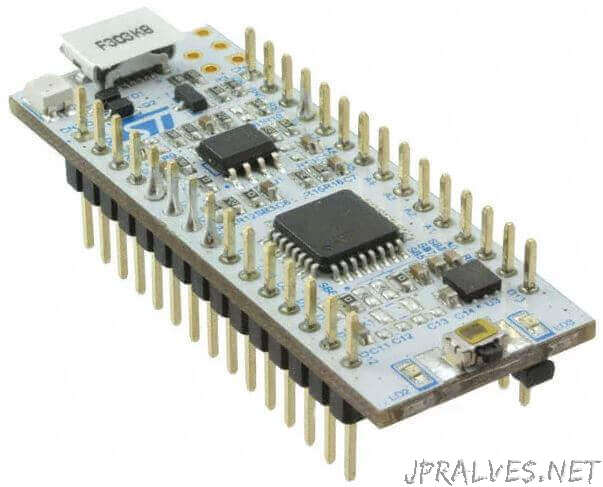
The STM32 Nucleo-32 board provides an affordable and flexible way for users to try out new concepts and build prototypes with the STM32 microcontroller, choosing from the various combinations of performance, power consumption and features.The Arduino™nano connectivity makes it easy to expand the functionality of the STM32 Nucleo open development platform with a choice of specialized shields.The STM32 Nucleo-32 board does not require any separate probe as it integrates the ST-LINK/V2-1 debugger/programmer and it comes with the STM32 comprehensive software HAL library, together with various packaged software examples, as well as direct access to the ARM®mbed™online resources.
Specifications
- STM32 microcontrollers in 32-pin packages
- Extension with Arduino™ nano connectivity
- ARM® mbed™ -enabled (see http://mbed.org)
- On-board ST-LINK/V2-1 debugger/programmer with SWD connector:
- USB VBUS
- External source
- Three LEDs:
- USB communication (LD1), power LED (LD2), user LED (LD3)
- Reset push-button
- Supported by wide choice of Integrated Development Environments (IDEs) including IAR™ , Keil® , GCC-based IDEs (AC6 SW4STM32, …)
PinOut
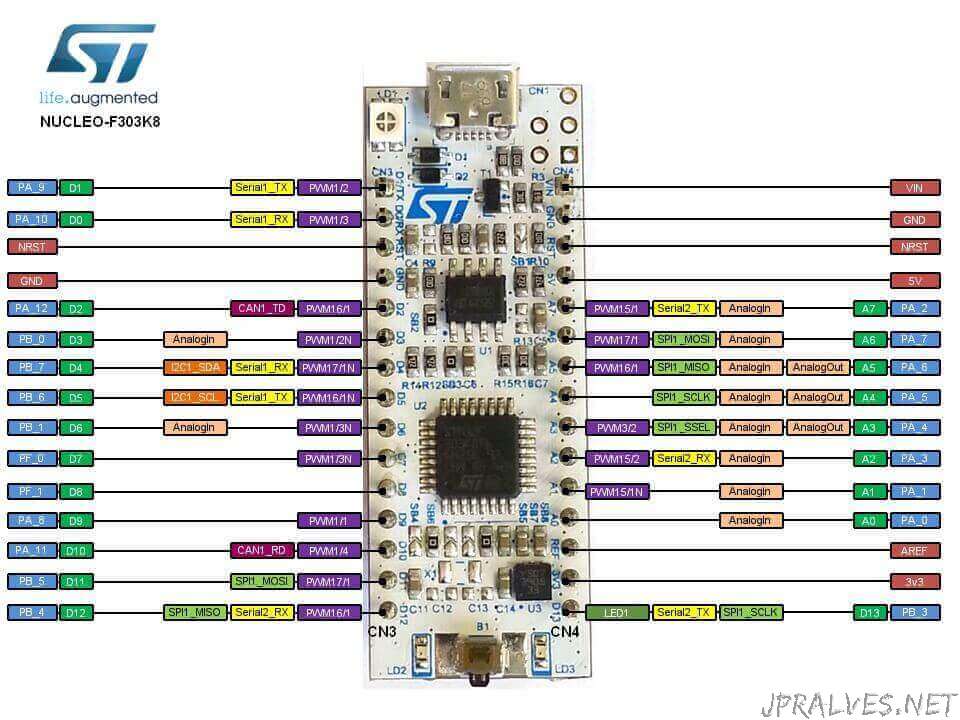
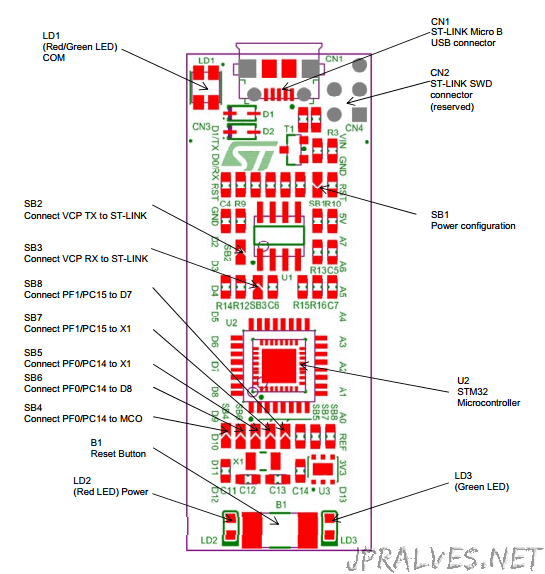
Dimensions

